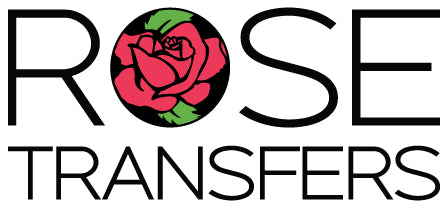Art Guidelines
General Guidelines
- Artwork will be printed in the size that it is provided.
- The lines in the artwork should generally be no smaller than 1pt, and the negative space between the inked areas should generally be no smaller than 2pt.
- Artwork should contain colors that easily correspond to the ink colors you have chosen.
-
Artwork should be reduced to the number of colors that you are purchasing. Any additional colors in the artwork will not be printed, and will end up as negative space in your design.
Example: 2 color logo is purchased, and scarlet and black are chosen as the ink colors, but the artwork contains red, black, and yellow. The yellow will not be printed. - Artwork must be ganged before upload if more than one piece is going on the page. We print exactly what you provide us, even if that means there is only one small logo on the largest size sheet.
- Art needs to be resized to the actual print size before submitting. If the design is larger than the product size you have chosen, we will shrink it to fit the dimensions of the product. We cannot guarantee this to be the size you need.
- The background of the artwork must either be transparent, or different than the colors in the actual design. We will not remove a background unless it is not listed in the ink colors.
- All text should be converted to outlines or curves.
- You can download our page templates HERE.
Accepted File Types
We always prefer vector files. We convert all art we receive into vector and spot colors before printing, so if the files we receive are already vector, you will have a good idea of what your finished product is going to look like.
Vector files usually end in .ai, .eps, .svg and sometimes .pdf. It is possible to embed raster files inside any of these file formats, which would mean that the artwork is then considered a raster image. An easy way to tell if an image is raster or vector is open it in your editing program and increase its size. If the image becomes blurred or pixelated, it's most likely a raster file. With vector image files, resolution is not an issue. You can resize, rescale, and reshape vectors infinitely without losing any image quality.
Raster files should have a resolution of at least 300 dpi.
If you have a raster file, you can use online vectorizing services to convert it to a usable format. VectorMagic.com is one service that only charges a small monthly fee to instantly convert JPG, PNG, BMP, and GIF files to rasterized images. Be aware that text often distorts when you use a program to convert it from raster to vector.
Preferred:



Also Accepted:




Artwork Charges
We do not charge for standard vectorizing services. If you would like to see a preview of how well your raster art has converted, there is a $5 fee per art file for a proof. We will send you the proof before your order goes into production. This may delay production as we will not proceed with your order unless the proof is approved by you.
Gradients
If your artwork is in raster (non-vector format) and it contains gradients or shading that needs to be converted to halftones, there is a $25 fee. If your raster art contains gradients, and the non-vector gradients option on the ordering page has not been selected, any gradients in the image will be flattened to one color. We do not charge for gradients in vector files.
Text
If your artwork is in raster (non-vector format) and it contains text that needs to be recreated by our artists, there is a $25 fee. If the non-vector text on the ordering page is not chosen, any text in the artwork will go through a standard vectorizing process, which may cause distortion to the text.
All vector text must be converted to outlines or curves.
